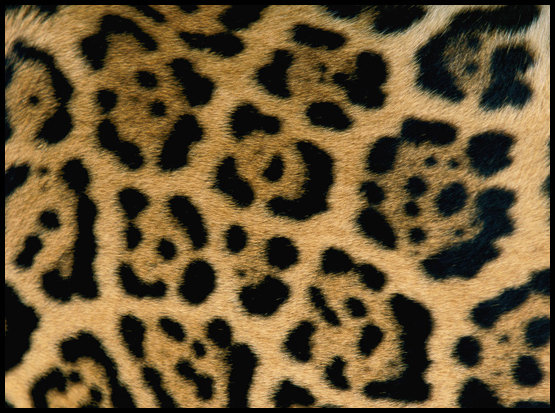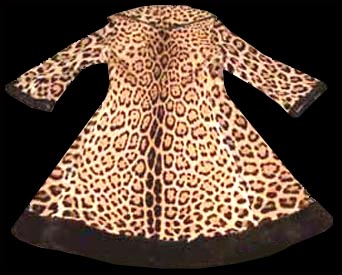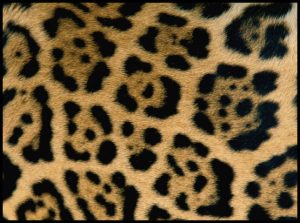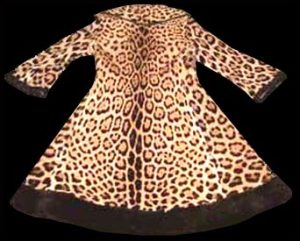The Jaguar is found in Central and South America (as opposed to the leopard, which comes from Africa and Asia) although they have also been seen in Southwestern United States.
One simple way to distinguish the fur of the jaguar is to look at the spot pattern. Although we say leopards and jaguars have spots, some of the markings aren’t really spots at all. The markings form rings, which may or may not be solid all the way around. These are called ‘rosettes’. Jaguars have very large rosettes on their sides and backs. Some of the rosettes have spots inside.
Leopard rosettes are much smaller and do not have any spots inside. While the rosettes of leopards form a similar pattern all over their bodies and the rosettes on a leopard’s shoulders are much the same as the rosettes on it’s belly, back and legs, jaguars do not have an all-over pattern.
There are three types of markings to note on a jaguar. On the neck and shoulders there are small, scattered spots. On the belly and back there are big rosettes. On the legs there are quite large, solid black spots.
The jaguar has become an endangered species due to the hunting of its fur. Farmers have killed jaguars because of cattle losses. Jaguars take cover in grasslands but are dying from smog and cutting. It is unlawful to import or export Jaguar fur.
Written by Pauline Cameron & Katie Kemsley
* Due to growing concerns over wildlife conservation and ethical practices, the commercial trade of Jaguar fur has become illegal under the Convention on International Trade in Endangered Species (CITES).
The majority of wild cats across the globe, including tigers and spotted species such as jaguars, leopards, ocelots, margays, and leopard cats, are protected. Importing skins or products made from or adorned with their fur is strictly prohibited.
We prohibit our members from engaging in the illegal trade of any endangered species.



